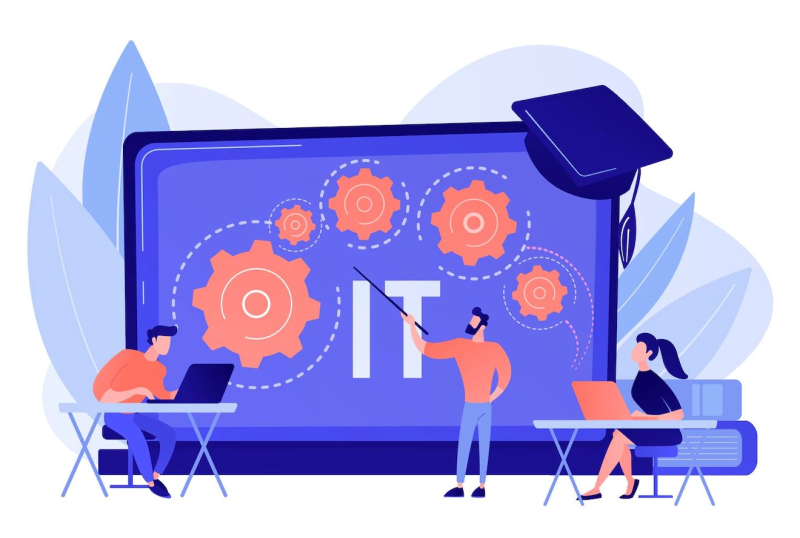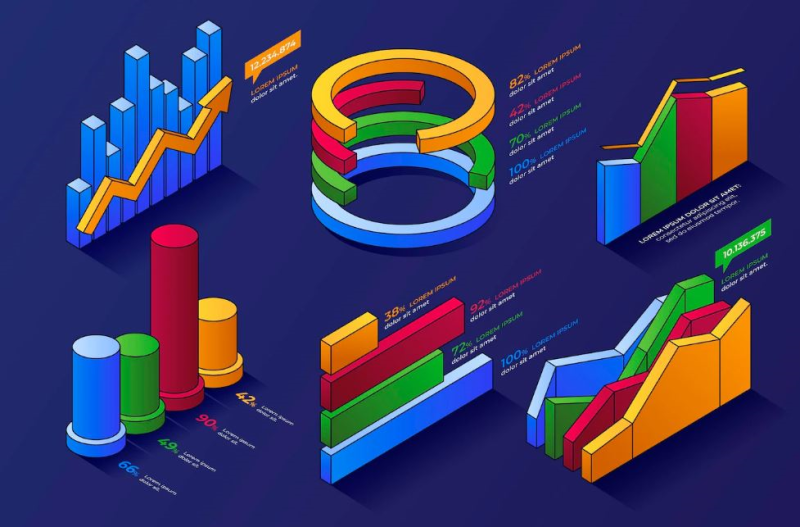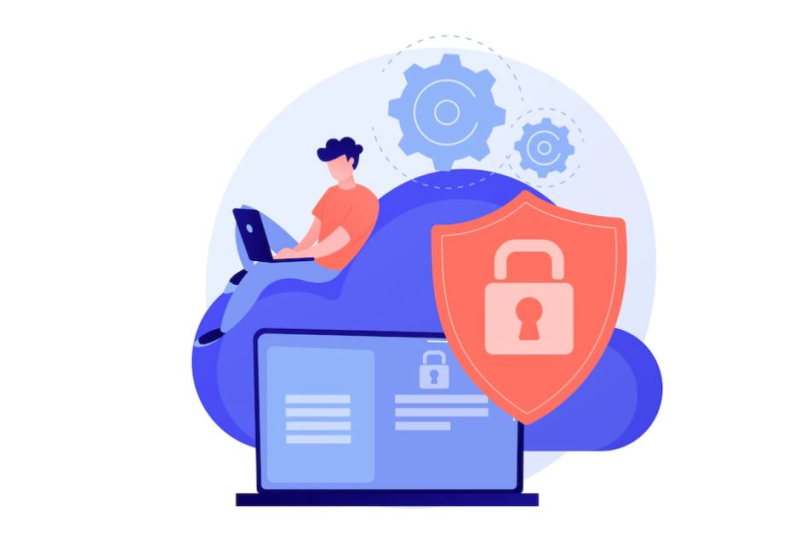Smart Education
The Internet of Things (IoT) is a system for improving the educational system
Internet of Things (IoT) in the service of teaching and learning
The Internet of Things (IoT) is changing many areas of our daily lives. While it may not seem like it, it must be admitted that the education system is also included in this list. An intelligent educational system tries to maximize the use of Internet of Things (IoT) technologies in the entire process of implementing the educational program, evaluation and management of the educational center. Now we have to see what is the difference between a normal and smart educational center and where is its place in the educational system? Stay with us to answer the questions raised in this field.

The comparison of smart educational center and smartening of educational centers using Internet of Things (IoT)
A “smart educational center” is a physical school or university whose educational system is based on the use of network and Internet of Things (IoT) technologies. In other words, the lessons are taught electronically and the evaluation and monitoring system is also smart. In audio-visual content, scientific content is changed and developed in an attractive environment with operational capabilities, and this is where learners are allowed to use their smartphones, tablets, and laptops to replace blackboards and homework. Distance learning (online and virtual classes) is an example of an intelligent educational system.
Meanwhile, the phrase” smartening of educational centers” refers to the use of Internet of Things (IoT) technologies. It is possible to make education centers smarter by using things like sensors and modules as an intelligent central management system to improve management processes. In fact, the emergence of intelligent Internet of Things (IoT) technologies allows educational centers to improve their safety and increase access to information in the educational environment.

The benefits of implementing the Internet of Things (IoT) in the field of education
Below is a list of the benefits of using the Internet of Things (IoT) in education:
• Improving management processes
Managing an educational institution, managing resources and their proper distribution requires a lot of paperwork. By implementing Internet of Things (IoT) solutions, we actually seek to create a platform for faster, risk-free and interconnected decision-making where all stakeholders (teachers, learners, parents and government officials) participate in improving the performance of the institution.
• Productivity of collected data
Thanks to the Internet of Things (IoT), educational institutions can simultaneously process a large amount of data and carry out a wide range of actions such as managing security and safety issues, checking the academic progress of students and also monitoring the professional training of teachers. Therefore, these vital data can be used by institutions to improve efficiency.

• Improved resource management
In the long term, the Internet of Things (IoT) will reduce operating costs in education. In addition, the management of smart educational centers can use the smart tools of the Internet of Things to ensure the efficiency of water consumption and other energy resources.
• Improving the level of security
Universities and schools can benefit from the set of Internet of Things (IoT) security tools in order to improve their safety and security level. Most educational institutions do not have the necessary infrastructure to identify crimes such as theft, abuse, sexual assault, and smoking, and they also do not have a proper crisis management plan in case of a disaster or emergency. The Internet of Things (IoT) can help solve such problems on a large scale by using smart tools, including video surveillance tools and environmental sensors. For example, in the event of any fire or water leakage, sensors based on the Internet of Things (IoT) can send necessary warnings to the intelligent central management system in the shortest possible time. Examples of these platforms increase the confidence of parents, pupils and students towards the safety of the educational environment, promote positive habits and make the management of the institution easier.

What are the uses of the Internet of Things (IoT) in education?
• Reduce costs
By installing Internet of Things (IoT) tools such as sensors on faucets and lights, so that they are switched automatically in the absence of humans, it is possible to save energy and thus reduce the operational costs of educational centers.
• Monitoring the health of learners and staff
Healthy pupils, students and staff means a more productive education system. By using Internet of Things (IoT) technologies, the physiological signals of the health of learners and teachers can be identified and controlled. This information is stored in databases and helps doctors to analyze their health easily. Internet of Things (IoT) has also helped in storing information such as blood pressure, medical history, allergies, prescription details so that necessary treatments can be administered in case of an unfortunate incident.
• Evaluation of attendance and exams
Some educational institutions include rules such as 80% attendance during a semester or academic year to evaluate the attendance of a student. Sensors installed in and around the premises of educational institutions play an important role in monitoring the daily activities of learners (students). In addition, RFID tags in student ID cards check and register students' attendance on a daily basis and provide reports to the staff. As a result, a message will be sent to those students with lower attendance. In addition, the Internet of Things (IoT) allows students to participate in exams remotely. The sensors placed in the devices can track the student's movement to make sure that there is no cheating in the exam.

• Light and temperature control
The required temperature in classes and sports halls is different in different conditions. Presence detection sensors have the ability to change temperature and light conditions according to environmental changes. These sensors can also sense human presence and turn the lamps on or off accordingly.
• Collection of functional data
One of the biggest concerns of the current education system is that most of the curriculum and teaching techniques are now outdated and not suitable for today's students. The implementation of Internet of Things (IoT) technologies focuses on data collection and analysis to produce interactive content that promotes learning on a much larger scale. Internet of Things (IoT) tools also collect data about staff and learner information and improve the production of educational tools and accessories by understanding their interests.

• School and university bus safety
Sometimes many parents may worry about sending their children to school or university through educational center buses due to the unsafe driving of drivers. Now we have to see how the implementation of Internet of Things (IoT) technologies can help solve this problem. Sensors placed in the service of educational institutions allow staff and parents to track the driver and the bus. These sensors, in turn, help drivers to be aware of speed limits and tire punctures and prevent accidents.
• Tracking the location of students
Many parents worry about their children not getting home on time or getting lost on the way to school. The Internet of Things (IoT) helps parents by making sure their kids get home on time. For example, sensors in school bags or shoes, or using smart wristbands, will send the child's details and location to their parents and raise the necessary warnings when the child is in danger. In addition, as soon as the child leaves the designated paths leading home, location details will be sent to parents and nearby police departments.

Smartening educational centers with IoTSmile platform
All the improvements mentioned above in the field of education thanks to the implementation of the Internet of Things (IoT) have been only part of the positive effects of using these technologies on educational environments. While improving the quality of educational services is always the first priority of the education system, the integration of new technologies allows managers of educational institutions to facilitate and improve daily management processes.
IoTSmile integrated operation platform is capable of turning all educational centers, including schools, universities and other educational institutions, into an intelligent educational system by providing intelligent solutions.
Among the most important achievements that the use of this platform will lead to are the following:
- Energy consumption management
- Reducing operating costs
- Increased safety and security level
- Evaluation of attendance and exams
- Monitoring the health of students and staff
In this article, we discussed various applications of the Internet of Things (IoT) in the education sector. Now, in order to receive advice and prepare any of the products, you can contact us by calling the numbers announced on the site, sending an email or registering a ticket. Our colleagues are ready to answer and guide you.
Resources:
- Departments: Benefits of IoT in Education
- Link.Springer: A Survey of Internet of Things (IoT) in Education: Opportunities and Challenges-24 July 2019
- Techvidvan: IoT Applications in Education Sector
- Kdnuggets: Role of IoT in Education
- Analyticssteps: 8 Applications of IoT in Education- Jun 09, 2021
foundNothing
foundNothing

